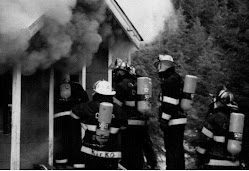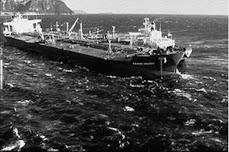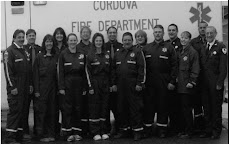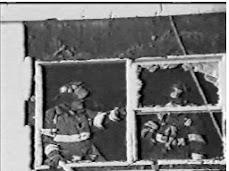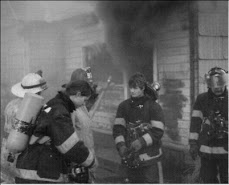 "My fire service career now almost spans a half a century. I have lost track of the tens of thousands of firefighters that I have had a chance to make acquaintance with. I can’t remember half of the fire chiefs that I had worked on projects with. Yet, when the name Dewey Whetsell is mentioned in a conversation I have this instant image and total recall of my exposure to him. Dewey Whetsell is not only unforgettable but inimitable.
"My fire service career now almost spans a half a century. I have lost track of the tens of thousands of firefighters that I have had a chance to make acquaintance with. I can’t remember half of the fire chiefs that I had worked on projects with. Yet, when the name Dewey Whetsell is mentioned in a conversation I have this instant image and total recall of my exposure to him. Dewey Whetsell is not only unforgettable but inimitable. Fire and Ice
Fire chief recounting over 30 years fighting fires and conducting search and rescues in Alaska
Sunday, January 26, 2020
Retired California State Fire Marshal Ronny J. Coleman said,
 "My fire service career now almost spans a half a century. I have lost track of the tens of thousands of firefighters that I have had a chance to make acquaintance with. I can’t remember half of the fire chiefs that I had worked on projects with. Yet, when the name Dewey Whetsell is mentioned in a conversation I have this instant image and total recall of my exposure to him. Dewey Whetsell is not only unforgettable but inimitable.
"My fire service career now almost spans a half a century. I have lost track of the tens of thousands of firefighters that I have had a chance to make acquaintance with. I can’t remember half of the fire chiefs that I had worked on projects with. Yet, when the name Dewey Whetsell is mentioned in a conversation I have this instant image and total recall of my exposure to him. Dewey Whetsell is not only unforgettable but inimitable. Saturday, November 23, 2019
Friday, January 30, 2009
OTHER REMARKS
David L. Tyler, Alaska State Fire Marshal "In writing 'Fire and Ice: Tales from an Alaskan Volunteer Fire Chief' Chief Whetsell has done an incredible job of combining experience, wisdom and wit. It doesn't matter if you are a firefighter or Fire Chief, ditch digger or Executive VP of a major corporation, the insights in this book will help you to be better at whatever you do, especially if you already know everything..."
Anchorage Daily News "Whetsell recounts his adventures in an especially amusing voice.....bubbles with punchy remininiscence..."
Carol Reed, president, Alaska State Firefighters Association "Chief Whetsell's 'Fire and Ice' not only exudes his ever present wit and wisdom but it showcases what takes place in communities all across Alaska. The Alaskan fire service using their ingenuity and adaptability to respond in extraordinary ways to serve their fellow citizens ..."
Oil Company Executive Mike Williams "Just a few weeks after the Exxon Valdez accident I was sent up to Alaska by BP (British Petroleum) to work on a new oil spill response plan for the Prince William Sound. One of the places I visited to discuss these plans was Cordova. Everyone there was complaining about Alyeska and the oil companies and they were not very interested in plans for the future. Except Dewey; he was different. Instead of complaining he lectured me on the merits of the Incident Command System. I had never heard of ICS and thought he was crazy, but the next morning it dawned on me what he was saying and with his help we introduced ICS to the oil industry. It is now the standard organizational concept for most oil spill response plans as well as other disasters. Thanks, Dewey..." Williams is also a Master Mariner, Fellow of the Nautical Institute, Retired Vice President of Alyeska Pipeline Service Company, Alaska
Jill Fredston, author of "SnowStruck" and "Journeys Along the Arctic Edge" and winner of the 2002 National Outdoor Book Award "Dewey Whetsell spent half his lifetime responding to shipboard fires, blazing houses, car wrecks, medical emergencies, underwater incidents, and other disasters...he was the heart of the fire department."
The Muncie Star "Whetsell's contribution to the safety of mankind is legendary in Alaska."
American Fire Journal article "Fire Chief Dewey Whetsell is one of the finest small-town chiefs in the country".
Chief (ret.) Bud Rotroff, senior member of Alaska-DNR's Overhead Team
Chief Sam Bunge,
Wednesday, January 28, 2009
BOOK CONTENTS
Working with Cops and Miscellaneous Gun Calls ... Air Medevacs ... Dive/Rescue Operations ... -- The Alganik River Recovery ... -- Collapse of the Copper River Bridge ... -- R.I.P. to "What's-His-Name" ... -- Trapped Under a Capsized Boat ... The Death of a Rescuer ... The Frank Hansen Operation ... The Florian Rescue—Hasty Team/Support Team Concept ... Blown Off the Bridge ... Fall From Mount Eyak ... Avalanche at the Tunnel Project ... Avalanche: A Residential Neighborhood ... SAR Anecdotes ... The Secrets of "SAR Central" ... DISASTERS ... -- Disasters and the Ryan Air Crash ... -- The Crash of Coast Guard Helo #1471 ... -- Crash of SwissAir 111 and Convergence on Nova Scotia ... -- The Exxon-Valdez Oil Spill and Convergence ... -- A Word About FEMA ... MANAGEMENT ... -- Scabs Galore ... -- Ammo for the Union ... -- Fire Service Safety: Fact versus Hype ... -- Well-Meaning Outside Agencies ...-- Emergency Medical Services: Foster Parenting to Adoption ... -- "Firemark" and Management Fun ... LEADERSHIP Cultural Basis for Group Conflicts ... —Tribal Affiliations ... — Negativity and Nit-Pickers ... — Process Fixation ... — Mean-World Syndrome ... — The Rosenberg Experiment ... Setting the Groundwork to Minimize Personnel Problems ... Sources of Group Conflict ... — Old Guard vs. Young Turks ... — Management vs. Union ... — Central Office vs. Field ... — My Territory vs. Your Territory ... — Your Rules vs. My Needs ... — Planning the Confrontation ... — Conducting the Confrontation ... Leadership Summary ... TRAINING Not Enough Hours Available ... — Maximizing Training Time ... — Training in Stations ... — Tactics Scenarios ... — Single Large Scenario ... EXPANDING POLITICAL POWER Fighting the Political Battles at the State Level Fire Service Associations ... — Management Principles
Tuesday, January 27, 2009
Search and Rescue Operations
 After about 10 years of performing Search and Rescue (SAR) operations for the troopers, a visiting trooper stopped by the station and referred to CVFD as "SAR Central". I thought that was cool.
After about 10 years of performing Search and Rescue (SAR) operations for the troopers, a visiting trooper stopped by the station and referred to CVFD as "SAR Central". I thought that was cool. The first search and rescue operation that we did for them was in 1975, when Tooper Mike Metrokin called me and said a boat was sinking out in the Sound, and although he would usually get some resources out there before the Coast Guard could arrive, he could barely walk because of an injured back. We gathered up some dewatering pumps from the harbormaster, some survival suits from the fishermen’s union, a couple of 2-man CO2 inflatable life rafts that can be deployed from an aircraft and flew them out to the sinking boat. Consequently, grateful fishermen purchased numerous sea/air rescue items to keep at the fire station, and that began a 30-year history of search and rescue operations in an area larger than the States of Massachusetts,
Thursday, September 14, 2006
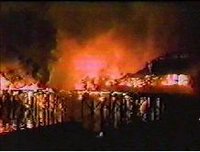 from "Chugach Cannery Fires"
from "Chugach Cannery Fires"While the Truck Company crew was crawling around the dock, planning how to cut it in two, firefighters from both engine companies who were not already committed were sent under the dock. Lt Mark Kirko placed the guys under the dock where they stood waist to chest deep in the water and used the handlines supplied by the portable pumps to fight the creosote-pylon fire and hold it back from crawling up to under our feet. Later, my son Jason, told me how eerie it was when boats and forklifts would fall through the dock and splash in the water below creating wakes that would sometimes slurp up to their chins. He also said that oddly enough, they became used to the cold and no longer noticed it. I was able to change that approach after some time, when the tide receded a bit and we took control of the warehouse, in the meantime, we had to rotate crews under there to prevent hypothermia.
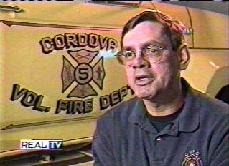 from "Avalanche at the tunnel site"
from "Avalanche at the tunnel site"A small slide was spotted coming down, air horns sounded, and the probers scattered. They returned, this time accompanied by Points North, and Plumb pulled everyone back out of the slide area who was not wearing avalanche beacons. Another large slide was spotted and the searchers retreated from the area. One CVFD member was stuck in the snow but was pulled free, and Gypsy got bogged down and had to be lifted out. She injured her hind legs permanently. This slide piled an additional 15 feet of snow on the previously search area. The toe of the new slide was now 20 feet from the excavator . Plumb moved the staging area further back down the road.

from “Rescue on
---We were throwing our packs of medical gear and mustang suits in the corner when a couple of local EMTs and the town's physician’s assistant (the town has no doctor) came into the lounge and spoke with us. They gave us some antibiotics and betadine solution. Andy took the antibiotics while I found a waste basket, inserted a new plastic trash bag, filled it with warm water and betadine, and placed Andy's feet in it (they were badly blistered). Andy then commenced to eat about four hundred hamburgers.
---By
---One of the
from "Expanding Political Power"
Governor Cowper and I weren’t buddies, or anything. We just had occasions where we talked about things during my stint as President of the Alaska Fire Chief’s Association.
A few hours later, Cowper called me to say he had first contacted the U.S. State Department who told him that there were plenty of search dogs already in
from "Mean-World Syndrome"
--Her boyfriend, Paul Malek, was an easy-going sort, but when Don forced him off the road, leapt from his car and ran toward him, Paul pulled a .22 revolver and shot. At the same moment, Don spun around to escape, but was struck in his right “love handle”. He ran back to his car and drove himself to the hospital.
--Paul drove to the police station and told them he just shot Don. Incidentally, because of that shooting, Paul – who was the singer in our band – would never sing the song “Stagger Lee” because it was a song about Stagger Lee shooting a guy over a crap game, and Paul didn’t want to appear cavalier about shooting someone.
--Anyway, after the E.R. doc plugged the hole in Don, we were to transport him in the ambulance to the airport for a medevac flight to
From "Drowning and the
---We headed for the door, and the doc peered out and down the hall to his left and saw the crowd of people there, including the boys’ parents. I looked over his shoulder and saw their expressions were saying things like, “Kids, they’ll be the death of us”, whimsical embarrassment, “What are ya gonna do?” Obviously, they had come in after we rolled through the building doing CPR. The doc exhaled, steeled himself, and walked out. I froze at the door and didn’t want to walk out, especially still wearing my dive suit. People always looked at me like they were looking for answers. I don’t have words for these situations. I heard David’s mothers voice, “He Died!”
---I peeked out and saw my chance to escape by turning right and out a secondary exit which put me in a walkway between two buildings. I walked to the front of the building, which was jammed with vehicles and, avoiding people, made it to the rescue truck and ducked inside and sat in the dark.
---I suppose the crew inside was waiting for me to come by and officially excuse them from the operation. I couldn’t do it. I couldn’t go back inside and frankly resented being expected to be tougher than everybody else. Too many times over the years I avoided meeting and returning eye contact with people after incidents like this. One time I was walking into the post office and the elderly wife of a man we unsuccessfully tried to revive at their house was walking out, saw me, shook, put her hand up to her mouth and started bawling. I went back to my car and drove off.
from "Exxon-Valdez"
On May 4th, Vice President Dan Quayle (and wife Marilyn) flew to Cordova. A little before they arrived on Air Force 2, Quayle’s advance team came in on Wilburs Airline (a small commuter airline). Accompanying the advance team was our mayor, Erling Johansen. Their flight was so bumpy that one man’s seat broke loose and he was rocking back and forth on one bolt. The plane landed so hard that the front landing gear collapsed and the plane skidded on its nose to a stop. Local DOT employee, Robert Cunningham rolled the fire department crash truck out of the station and pulled up to the wrecked plane which was not on fire. Mayor Johansen stepped from the plane and Cunningham remarked, “God, you’re everywhere!” Johansen smiled whimsically and walked off. Shortly thereafter, Air Force 2 landed, rolling passed the skid marks, the wrecked plane, the fire engine, and the sign saying “Welcome to the Mudhole Smith Airport” for all the passengers to see. Quayle, wearing his James Dean “Rebel Without a Cause” red nylon windbreaker, and his wife deplaned as though they were not at all surprised.

from "Ryan Air Crash"
---Even if your disaster plan is flawless, a glitch in the plan of a related service could bottle-neck yours: It was after dark in November 1987 when the fully loaded Ryan Air twin engine Beechcraft 1900, landing at Homer, Alaska, plowed through a hurricane fence, hit the ground 600 feet short and 250 feet left of the runway. The belly-skid sheared the seats from the floor and the sudden stop caused the 21 persons aboard to be piled atop each other in the front of the plane.
---The plane looked in tact as it sat on the snow and frozen ground. But the passengers, most of them high school students returning home from a basketball tournament, were still strapped to their seats, dead or dying. Chief Robert Purcell and his
The 7 survivors were taken to
Wednesday, September 13, 2006
from " North Pacific Processors Cannery Fire"
That’s where I had the fork lift hoist Kyle up where he cut a strip out of the ceiling so we could see into the concealed space. While Kyle was cutting the ceiling, Loyd was working the bombline and some others were using a handline trying to get streams of water into the ceiling assembly of the egg room. That was just busy work and everybody knew it.
Funny, it was about that time, the dispatcher radioed me, but because of the noise, I couldn’t understand her and stepped into a compressor room and closed the door. She said she had on the phone a Tom Wells, Haz Mat specialist from the Anchorage Fire Department. Wells wanted to know if we wanted a 3-man “assessment team” to come down? I asked “What does he want to assess?” A moment later, she replied, “The ammonia system”. I explained to thank him but that we had the ammonia shut down. I went back out but a few minutes later she called me back. I stepped back into the compressor room where I could hear her say that Tom was on the line again and he wanted to be sure I knew that “it was ‘free’”. I almost felt guilty by saying “no” again. Incidentally, the next day when I talked to Tom on the phone, he explained that he’d received a call from the State’s Department of Environmental Conservation (DEC) wanting him to go to Cordova to assure there would not be a release of ammonia. They had heard of the fire and before the fire department was in full operation, they were calling for outside expertise.
from "Expanding Political Power"
So a bunch of us met for breakfast Sunday morning before we had to catch our flights out of there and discussed this. State Fire Service Training’s Tom Take said he had a friend in the Cowper “camp” – an
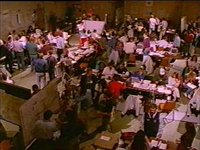 from "Exxon-Valdez" One morning, I was with ADES, watching in awe as Pete Wuerple spun in circles in the middle of the room, barking out orders. Resources were arriving from across the nation and around the world: Boom from
from "Exxon-Valdez" One morning, I was with ADES, watching in awe as Pete Wuerple spun in circles in the middle of the room, barking out orders. Resources were arriving from across the nation and around the world: Boom from “I’m ordering all acquisitions to stop.”
You could hear a pin drop
He continued, “From now on, I will be the only one issuing purchase orders. Anything you want will be properly listed on numbered requisitions, and the requisitions will include the cost of the items and the estimated cost of shipping to
Pete, stood stunned. His shirt was rumpled, he had been sweating and his hair was sticking up. His staff all looked at him.
“Oh, great.” He said. “The elephants are stampeding, and we’re tripping over piss-ants!”
The OMB piss-ant never acknowledge the statement, he just acquired a desk and sat down. I always admired Pete. I admire anyone who will work himself into such a lather that he has to be hauled away in an ambulance, which is exactly what happened about a week later. He recovered of course.
from "Bristol Monarch"
---Anyway, I still wanted to be able to ventilate the compartment before opening the hatch (and taking the hose in) but I didn’t know how. A couple of the guys who reconned the area came up an outlandish idea. To direct the smoke from a hatch in the overhead of the lazarette and force the smoke straight out to the main deck and open air, they suggested using the ships supply of cardboard boxes lashed together with duck tape into a very long tube right through deck 1 and to the main deck at which point the electric smoke ejector would be sitting to suck the smoke with great force. I asked them what would keep the cardboard from catching fire? “Well”, they said after a pause, “you gotta be fast.” How do you argue with logic like that?
---I told them to round up everyone that didn’t something better to do and start making the smoke tube
from "Katalla Dive"
---I called McAlister in
---During that operation, I lost a mask, one fin, and ten pounds. But Fred Brady gained a splint. He sold his diving gear within a week and never dived again.
from "Management"
---I was president of the Alaska Fire Chief’s Association, and was in the middle of an Association conference in Juneau, when during a break, I was being interviewed by a TV news crew…. the reporter asked my views on some recent newsworthy problems that were occurring in Fairbanks.
---A bitter dispute arose between the
---Without sounding too scolding, I explained to the reporter that
---I ended by saying that “The manning of their department is so low, it’s irresponsible. It’s almost criminal, in my opinion”.
---By the time it was aired, most of my statements had been edited except “
…. I was chatting on the phone with Anchorage Fire Chief Larry Langston. I told him about some of the data I put in the letter (to Fairbanks city manager) and he told me that he had gone to school with the president of the

